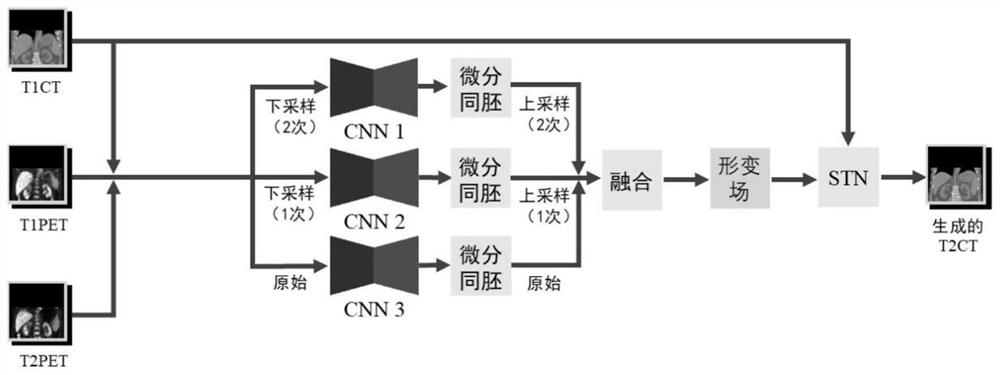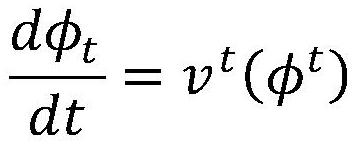Delayed CT image generation method based on deep learning algorithm
A CT image and deep learning technology, applied in the field of medical images, can solve problems such as insufficient accuracy of CT images
- Summary
- Abstract
- Description
- Claims
- Application Information
AI Technical Summary
Problems solved by technology
Method used
Image
Examples
Embodiment 1
[0035] like figure 1 Shown is a delayed CT image generation method based on a deep learning algorithm, comprising the following steps:
[0036] S1, collecting T2PET, T1PET and T1CT images of the patient;
[0037] Among them, the T2PET image refers to the image generated by the delayed PET scan, the T1PET image refers to the image generated by the first PET scan, and the T1CT image refers to the image generated by the first CT scan;
[0038] S2, after inputting the collected T2PET, T1PET and T1CT images into a multi-resolution registration convolutional neural network (MRR-CNN), output three deformation fields including large, medium and small deformation amounts;
[0039] S3, merging the three deformation fields including large, medium and small deformation quantities output in step S2 into one deformation field;
[0040] S4, inputting the deformation field and the input T1CT image into a spatial transform network (spatial transformnetwork, STN) to generate a T2CT image;
...
PUM
 Login to View More
Login to View More Abstract
Description
Claims
Application Information
 Login to View More
Login to View More - R&D
- Intellectual Property
- Life Sciences
- Materials
- Tech Scout
- Unparalleled Data Quality
- Higher Quality Content
- 60% Fewer Hallucinations
Browse by: Latest US Patents, China's latest patents, Technical Efficacy Thesaurus, Application Domain, Technology Topic, Popular Technical Reports.
© 2025 PatSnap. All rights reserved.Legal|Privacy policy|Modern Slavery Act Transparency Statement|Sitemap|About US| Contact US: help@patsnap.com



